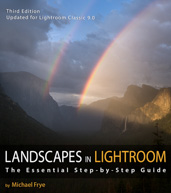by Michael Frye | Dec 18, 2022 | Announcements, Digital Darkroom
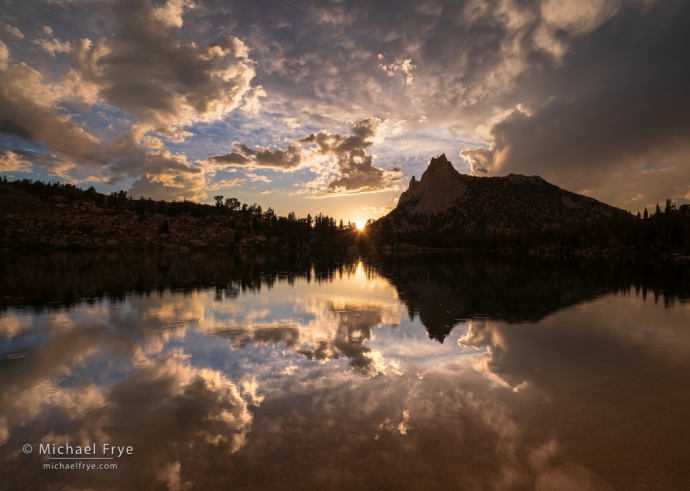
Sun setting over an alpine lake, Yosemite
I’m pleased to be joining the Winter Speaker Series on Nic Stover’s Nature Photography Classes site. The Winter Speaker Series will be focused on image processing, and includes online presentations by David Kingham, Nick Page, Sean Bagshaw, and me.
My talk will be about the Masking Panel and local adjustments in Lightroom Classic. The Masking Panel is incredibly powerful, allowing you make and combine selections in almost infinite ways, and add sophisticated touches to your images that you previously needed Photoshop for.
(more…)
by Michael Frye | Dec 11, 2022 | Light and Weather, Vision and Creativity

Crashing wave in late-afternoon light, Oregon coast. We had to deal with off-and-on rain while trying to photograph large waves crashing against the shore. But then the sun broke through for about five minutes late in the afternoon, bathing this scene in beautiful light. Luckily we caught a few big wave splashes during those five minutes. 70mm, 1/500 sec. at f/8, ISO 160.
After returning from New Zealand I made a trip to the Oregon Coast for our annual workshop. This part of the world is very different from my usual mountain haunts, which might be why I enjoy it so much. There’s a wild, rugged grandeur to this coastline, and if you’re lucky enough to encounter some big waves that just adds to the sense of awe.
And we did experience some big waves. Watching – and hearing – those monsters crash ashore was an experience none of us will soon forget. But even under calmer conditions this area offers wonderful opportunities to capture moody scenes of fog, or stormy skies.
(more…)
by Michael Frye | Nov 28, 2022 | Light and Weather, Travels and Stories
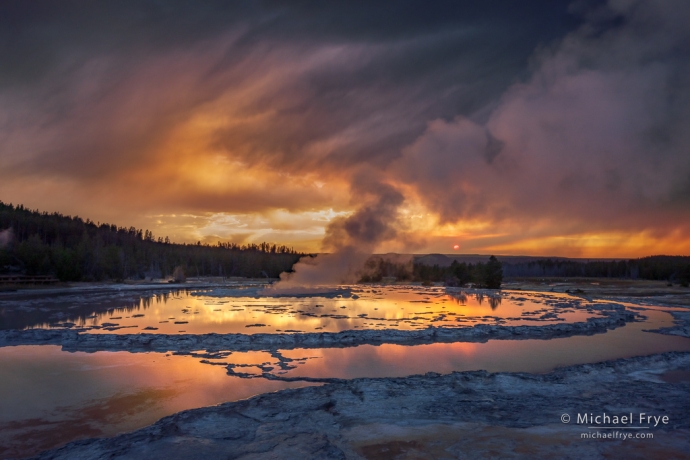
Stormy sunset, Yellowstone NP, Wyoming. 26mm, 1/125 sec. at f/11, ISO 320.
It’s been a busy year. Looking back through my images I see lots of work that I haven’t had a chance to post yet, including some favorites from our September trip to Yellowstone.
Yellowstone doesn’t have many iconic views, or the kind of dramatic mountain vistas that photographers are often attracted to. But there are endless photographic opportunities – if you look. And I think it can sometimes be easier to find scenes and images that express your own vision in a place like Yellowstone, where there’s lots to photograph, but nothing is laid out for you. You have to explore and find your own path, which tends to naturally lead you in different directions than others might take.
(more…)
by Michael Frye | Nov 20, 2022 | Light and Weather, Vision and Creativity
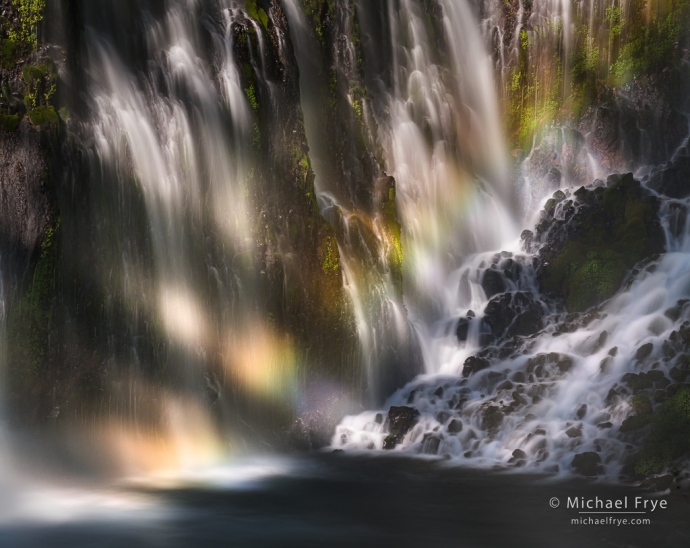
Tree shadows, rainbow, and waterfall, California. Claudia and I photographed this waterfall in soft light the evening before, but I came back the next morning hoping to see tree shadows when the sun got high enough. And sure enough, eventually trees cast beautiful striped shadows across the fall, creating a sunbeam-like effect. But I didn’t expect to also see a rainbow interspersed with the tree shadows – a nice bonus. I used a telephoto lens to fill the frame with the most eye-catching part of the scene, a polarizer to enhance the rainbow, and a neutral-density filter to slow down the shutter speed and give the water a soft, silky appearance. 135mm, 3 seconds at f/16, ISO 100, polarizer, ND filter (probably a 7-stop filter).
I love waterfalls. Who doesn’t? Besides their beauty, large waterfalls cast negative ions into the air, and negative ions supposedly have health benefits – making people feel refreshed and renewed, helping regulate sleep patterns and mood, reducing stress, and boosting the immune system. Or not; the scientific evidence is mixed at best. But whatever the reason, people seem magnetically drawn to waterfalls.
And of course waterfalls are quite photogenic. Over the past year I’ve had the opportunity to visit several waterfalls I’ve never photographed before. And while soft light usually works for waterfalls, I tried to seek out more unusual lighting conditions that could give the photographs a different look and feeling. That meant using sunlight, but waterfalls usually reside in basins and canyons, so they don’t often get that warm, low-angle light that we’re often looking for. And when the sun does get high enough to strike the fall, it’s often filtered through trees, creating splotchy light. Splotchy light can be harsh and downright awful, but sometimes, under the right circumstances, it can work. And – again, under the right circumstances – backlight can highlight a waterfall’s spray. And while front light is usually flat and boring, with waterfalls it can create rainbows.
(more…)
by Michael Frye | Nov 15, 2022 | Announcements
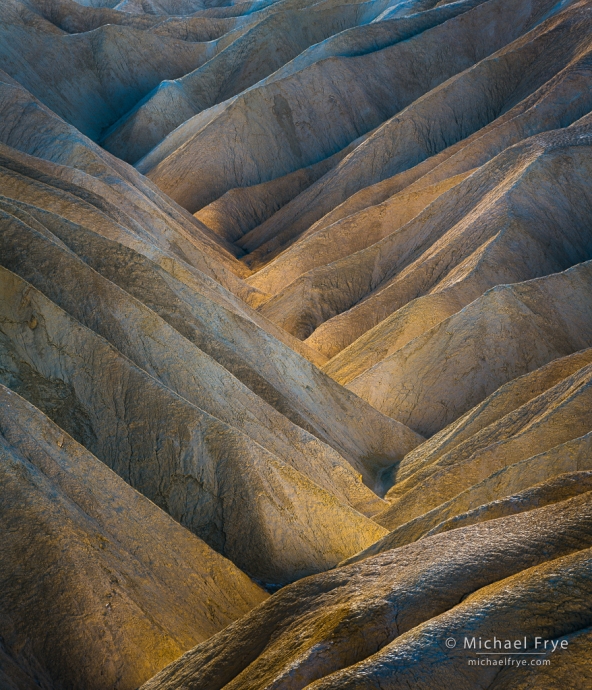
Luminous ravine, Death Valley
I’m honored to once again have one of my images included in the Natural Landscape Photography Awards. The image above from Death Valley won the third-place award in the Deserts category.
Congratulations to all the winners! You can see the competition galleries here. It’s a beautiful collection of photographs, and quite an honor to have my work included. As always, judging such things is highly subjective, and I’m sure there were many, many wonderful images submitted that didn’t get selected.
(more…)












